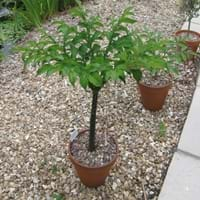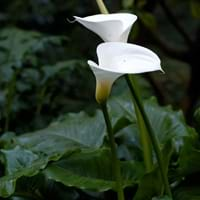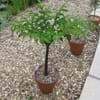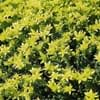Life Span
Perennial
Perennial
Type
Perennial
Bulb, Flowering Plants
Origin
Northeastern United States, Mid-Atlantic United States, Southeastern United States, Central United States, Canada
South Africa, Swaziland
Types
Not available
Passionfruit, Fire glow, Gem rose, Blaze, Crystal blush
Number of Varieties
Not Available
Habitat
Mountain Slopes, subtropical regions, Tropical Climate, Warmer regions
Swamps
USDA Hardiness Zone
4-9
8-10
Sunset Zone
Not Available
2a, 2b, 5, 6, 8, 9, 12, 13, 14, 15, 16, 17, 18, 19, 20, 21, 22, 23, 24
Habit
Clump-Forming
Clump-Forming
Flower Color
Yellow, Orange
Blue, Dark Purple, Light Purple, Red, White
Flower Color Modifier
Not Available
Bicolor
Fruit Color
Not Available
Not Available
Leaf Color in Spring
Green
Dark Green
Leaf Color in Summer
Green
Green, Dark Green
Leaf Color in Fall
Green
Green, Dark Green
Leaf Color in Winter
Green, Purple
Green, Dark Green
Leaf Shape
bipinnate
Arrowhead
Plant Season
Spring, Summer, Fall
Autumn, Spring, Summer
Sunlight
Full Sun, Partial Sun, Partial shade
Full Sun, Part sun, Partial shade
Type of Soil
Loam, Sand
Clay, Loamy
The pH of Soil
Acidic, Neutral, Alkaline
Neutral, Slightly Acidic
Soil Drainage
Well drained
Average
Bloom Time
Spring, Late Spring, Early Summer, Summer
Spring, Summer
Tolerances
Drought, Salt
Wet Site
Where to Plant?
Container, Ground, Pot
Container, Pot
How to Plant?
Seedlings, Tuber propagation, Tubers
From bulbs, From Rhizomes, Seedlings, Transplanting
Plant Maintenance
Medium
Medium
Watering Requirements
Requires plenty of water during the growing season, Requires regular watering
Over-watering can cause leaf problems or root diseases, Requires a lot of watering
In Summer
Lots of watering
Lots of watering
In Spring
Moderate
Moderate
In Winter
Average Water
Average Water
Soil pH
Acidic, Neutral, Alkaline
Neutral, Slightly Acidic
Soil Type
Loam, Sand
Clay, Loamy
Soil Drainage Capacity
Well drained
Average
Sun Exposure
Full Sun, Partial Sun, Partial shade
Full Sun, Part sun, Partial shade
Pruning
Remove damaged leaves, Remove dead branches, Remove dead leaves
Prune to stimulate growth, Remove dead or diseased plant parts, Remove deadheads
Fertilizers
All-Purpose Liquid Fertilizer
All-Purpose Liquid Fertilizer
Pests and Diseases
Aphids, Birds
Armillaria mellea, Gray mold, Leaf spot, Powdery mildew, Pythium rot, Rhizoctonia crown rot, Root rot, Thripes
Plant Tolerance
Drought
Drought
Flower Petal Number
Single
Single
Foliage Texture
Bold
Coarse
Foliage Sheen
Matte
Glossy
Attracts
Birds
Not Available
Allergy
Diarrhea, Excessive flatus, gastro-intestinal problems
Diarrhea, Intestinal gas, Vomiting
Aesthetic Uses
Not Used For Aesthetic Purpose
Beautification, Bouquets
Beauty Benefits
Not Available
Not Available
Environmental Uses
Air purification
Air purification
Medicinal Uses
Boils, bowel syndrome, cholesterol-lowering, Colic, Digestive, Fiber, Low calories, Piles, Stimulates new cell growth, Weight management and satiety
Not Available
Part of Plant Used
Corms, Fibre, Root, Seeds, Tuber
Flowers
Other Uses
Traditional medicine, Used like flour
Showy Purposes
Used As Indoor Plant
No
No
Used As Outdoor Plant
Yes
Yes
Garden Design
Container, Edible, Feature Plant, Groundcover, Mixed Border, Rock Garden, Wall, Wildflower
Not Available
Botanical Name
OPUNTIA humifusa
Zantedeschia Aethiopica
Common Name
voodoo lily, snake palm, elephant yam
Calla Lily
In Hindi
Konjac
Calla Lily
In German
Teufelszunge
Calla-Lilien-
In French
Amorphophallus konjac
Lys calla
In Spanish
Amorphophallus konjac
Cala
In Greek
Konjac
Calla κρίνος
In Portuguese
Amorphophallus konjac
Calla
In Polish
konjac
Calla Lily
In Latin
Konjac
Calla Lilium
Phylum
Tracheophyta
Magnoliophyta
Class
Magnoliopsida
Liliopsida
Order
Alismatales
Alismatales
Genus
Amorphophallus
Zantedeschia
Clade
Angiosperms, Monocots
Angiosperms, Monocots
Tribe
Thomsonieae
Zantedeschieae
Subfamily
Aroideae
Aroideae
Number of Species
Not Available
Importance of Devil's Tongue and Calla Lily
Want to have the most appropriate plant for your garden? You might want to know the importance of Devil's Tongue and Calla Lily. Basically, these two plants vary in many aspects. Compare Devil's Tongue and Calla Lily as they differ in many characteristics such as their life, care, benefits, facts, etc. Every gardener must at least have the slightest clue about the plants he wants to plant in his garden. Compare their benefits, which differ in many ways like facts and uses. The medicinal use of Devil's Tongue is Boils, bowel syndrome, cholesterol-lowering, Colic, Digestive, Fiber, Low calories, Piles, Stimulates new cell growth and Weight management and satiety whereas of Calla Lily is Not Available. Devil's Tongue has beauty benefits as follows: Not Available while Calla Lily has beauty benefits as follows: Not Available.
Compare Facts of Devil's Tongue vs Calla Lily
How to choose the best garden plant for your garden depending upon its facts? Here garden plant comparison will help you to solve this query. Compare the facts of Devil's Tongue vs Calla Lily and know which one to choose. As garden plants have benefits and other uses, allergy is also a major drawback of plants for some people. Allergic reactions of Devil's Tongue are Diarrhea, Excessive flatus and gastro-intestinal problems whereas of Calla Lily have Diarrhea, Intestinal gas and Vomiting respectively. Having a fruit bearing plant in your garden can be a plus point of your garden. Devil's Tongue has showy fruits and Calla Lily has no showy fruits. Also Devil's Tongue is not flowering and Calla Lily is flowering. You can compare Devil's Tongue and Calla Lily facts and facts of other plants too.





